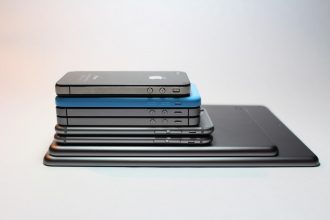
November 16, 2018
Software Can Make Non-Abstract Improvements to Computer Technology
In Ancora Technologies, Inc., v. HTC America, Inc., [2018-1404] (November 16, 2018), the Federal Circuit reversed the district court’s dismissal of Ancora’s complaint for infringement of its U.S. Patent No. 6,411,941, entitled Method of Restricting Software Operation Within a License Limitation, finding that the claims are directed to, and ultimately claim no more than, an abstract idea.
The Federal Circuit said that under Enfish and related authorities, the claims at issue here are not directed to ineligible subject matter. Rather, it held that the claimed advance is a concrete assignment of specified functions among a computer’s components to improve computer security, and this claimed improvement in computer functionality is eligible for patenting. As a result, the claims are not invalid under §101.
A two-step analysis determines whether claim 1 of the ’941 patent falls outside §101: (1) whether the claim, as a whole, is “directed to” patent-ineligible matter — here, an abstract idea — and, (2) if so, whether the elements of the claim, considered individually or as an ordered combination “transform the nature of the claim into a patent-eligible application.”
The Federal Circuit concluded that claim 1 is not directed to an abstract idea, and therefore it did not reach the second step. In cases involving software innovations, this inquiry often turns on whether the claims focus on the specific asserted improvement in computer capabilities or, instead, on a process that qualifies as an “abstract idea” for which computers are invoked merely as a tool.
Computers are not only improved through changes in hardware; software can make non-abstract improvements to computer technology. The Federal Circuit has several times held claims to pass muster under Alice step one when sufficiently focused on such improvements: In Enfish, the claimed self-referential tables improved the way that computers operated and handled data. In Visual Memory LLC v. NVIDIA Corp., the claims were directed to an improved computer memory system. In Finjan, the claims were to a “behavior-based virus scan” that was a specific improvement in computer functionality. In Core Wireless Licensing S.A.R.L. v. LG Electronics, Inc., the claims were directed to a method for making websites easier to navigate on a small-screen devices, using a specific type of index for a specific type of user. In Data Engine Technologies LLC v. Google LLC, the claims were directed to a specific method for navigating through three-dimensional electronic spreadsheets.
In accordance with these precedents, the Federal Circuit concluded that claim 1 of the ’941 patent was not directed to an abstract idea. The Federal Circuit said that improving security against a computer’s unauthorized use of a program can be a non-abstract computer-functionality improvement if done by a specific technique that departs from earlier approaches to solve a specific computer problem. The Federal Circuit explained that the claimed method here specifically identifies how that functionality improvement is effectuated in an assertedly unexpected way: a structure containing a license record is stored in a particular, modifiable, non-volatile, portion of the computer’s BIOS, and the structure in that memory location is used for verification by interacting with the distinct computer memory that contains the program to be verified. In this way, the claim addresses a technological problem with computers: vulnerability of license-authorization software to hacking.
In short, claim 1 of the ’941 patent is directed to a solution to a computer-functionality problem: an improvement in computer functionality that has the specificity required to transform a claim from one claiming only a result to one claiming a way of achieving it, and it therefore passes muster under Alice step one, as it is not directed to patent ineligible subject matter.




































